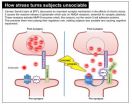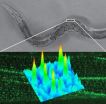(Press-News.org) A new study analyses the survival rates in Spain of newborns with a gestational age under 26 weeks. The results show that survival under 23 weeks is 'exceptional', although other factors such as birth weight and sex also have an influence.
Experts from the Spanish Society of Neonatology have studied the survival rates in Spain of newborns with a gestational age under 26 weeks, taking into account that a newborn carried to term is between 37 and 42 weeks.
The data have been drawn from the national database that gathers information on all babies born weighing less than 1.5 kilos. This database is constantly being updated and is used to ascertain the results of the care provided to these premature babies with less than 32 weeks' gestation.
"The more premature they are, the more complications they present due to their prematurity and the lower their chances of survival," Fermín García-Muñoz Rodrigo, of the University Maternity Hospital of Las Palmas de Gran Canaria and one of the authors of the study, explained to SINC.
"And, when they do survive, they are at high risk of suffering from sequelae in their neurological and sensory development".
For this study, published in the Anales de Pediatría journal, the experts only analysed the youngest newborns, in other words, 3,236 babies born after 26 weeks or less of pregnancy. According to the experts, the so-called 'limit of viability' is between 22 and 25 weeks.
"Babies rarely survive at 22 weeks and, when they do, it is at the expense of enduring many complications and long hospital stays, which involve a lot of suffering for them and their families," García-Muñoz Rodrigo added.
The chances of survival increase from that point onwards and the proportion of complications gradually decreases as the gestational age rises. Indeed, babies at 26 weeks, despite being very high-risk, are considered viable and are a benchmark group for comparing the results from the other gestational ages.
The results show that the precise survival rates by gestational age were 12.5%; 13.1%; 36.9%; 55.7% and 71.9% at 22, 23, 24, 25 and 26 weeks, respectively.
Survival with no serious intracranial haemorrhage, periventricular leukomalacia (damage to the brain's white matter close to the ventricles), bronchopulmonary dysplasia (chronic lung disease) or retinopathy of prematurity (abnormal development of the blood vessels in the retina) stood at 1.5%; 9.5%; 19.0% and 29.9% at 23, 24, 25 and 26 weeks, respectively.
"Survival with no serious illness in newborns under 23 weeks is exceptional, and very low in newborns of 23 and 24 weeks," the doctor pointed out. "Newborns of 25 weeks or more have a reasonable chance of survival and, in the absence of major malformations, they should be given active resuscitation and intensive care".
Other Relevant Factors
The group of authors will shortly publish another study which analyses other factors that may have an influence on the survival of these babies, in addition to gestational age.
"Birth weight –the higher, the better–, sex –girls develop a little better than boys–, whether or not the mother was given corticoids before giving birth to help to develop the baby's lungs and single foetuses compared to multiple pregnancies are very important factors as they all increase the chances of survival," García-Muñoz Rodrigo underlined.
The expert concluded by saying that medicine is not an exact science and that every birth must be treated on an individual case-by-case basis. "Other factors such as whether or not the foetus presents malformations, the monitoring of the pregnancy, the parents' values and expectations, etc., are details that should also be taken into consideration".
INFORMATION:
Reference
F. García-Muñoz Rodrigo, A. García-Alix Pérez, J.A. García Hernández, J. Figueras Aloy y Grupo SEN1500. "Morbimortalidad en recién nacidos al límite de la viabilidad en España: estudio de base poblacional". An Pediatr 2014;80(6):348---356.
Contact
Fermín García-Muñoz Rodrigo
Servicio de Neonatología
Complejo Hospitalario Universitario Insular Materno-Infantil de Las Palmas de Gran Canaria
Email: fgarciamu@gmail.com
The viability of premature babies is minimal at 22 weeks' gestation
Gestational age is not the only factor that influences survival
2014-09-18
ELSE PRESS RELEASES FROM THIS DATE:
A second look at glaucoma surgery
2014-09-18
New research led by Queen's University professor Robert Campbell (Ophthalmology) has revealed using anti-inflammatory medications after glaucoma laser surgery is not helpful or necessary.
Glaucoma is the most common cause of irreversible blindness in the world and about 400,000 Canadians are afflicted with the disease, which is mainly caused by pressure within the eye being high enough to damage the optic nerve. The optic nerve is responsible for sending messages from the eye to the brain and is a vital part of vision.
"The use of strong anti-inflammatory therapies after ...
Tropical fish a threat to Mediterranean Sea ecosystems
2014-09-18
The tropical rabbitfish which have devastated algal forests in the eastern Mediterranean Sea pose a major threat to the entire Mediterranean basin if their distribution continues to expand as the climate warms, a new study warns.
The study, by an international team of researchers led by Dr Adriana Vergés of UNSW Australia and Dr Fiona Tomas of the Mediterranean Institute for Advanced Studies in Spain, is published in the Journal of Ecology.
Members of the team surveyed more than 1000 kilometres of coastline in Turkey and Greece, where two species of rabbitfish have become ...
University of Kentucky research explores STXBP5 gene and its role in blood clotting
2014-09-18
LEXINGTON, Ky (Sept. 17, 2014) -- Two independent groups of researchers led by Sidney (Wally) Whiteheart, PhD, of the University of Kentucky, and Charles Lowenstein, MD, of the University of Rochester, have published important studies exploring the role that a gene called STXBP5 plays in the development of cardiovascular disease.
According to Whiteheart, previous genome-wide association studies (GWAS) identified a gene called STXBP5 as a factor that regulates a protein called Von Willebrand factor (VWF).
VWF is an important contributor to normal blood clotting. When ...
UT Dallas study uncovers factors in students' reporting of weapons at school
2014-09-18
As a result of outbreaks of violence in the nation's schools, concerns have grown about school safety and the overall well-being of students.
In a new study, UT Dallas criminology researchers have found that certain factors affect students' willingness to report weapons at school.
"A big part of adolescent development is figuring out your identity, and that does not always mean talking to grown-ups about what is going on," said Dr. Nadine Connell, assistant professor of criminology in the School of Economic, Political and Policy Sciences. "We can't stop students from ...
Improving medicines for children in Canada
2014-09-18
Ottawa (September 18, 2014) – A new expert panel report, Improving Medicines for Children in Canada, released today by the Council of Canadian Academies, addresses the importance of developing safe and effective medicines for children. Each year about half of Canada's seven million children use at least one prescription drug. Much of this prescribing is done off-label (i.e. the prescription differs from the authorized use), creating potential health risks.
Children have historically been excluded in drug research and development, including clinical trials. As a result, ...
Rosuvastatin treatments particularly effective among prediabetic patients
2014-09-18
Los Angeles, CA (September 18, 2014) Cardiovascular disease is the leading causes of death worldwide and high cholesterol plays a major role in accelerating its progression. Medical practitioners have turned to statins as a treatment to decrease cholesterol-carrying lipoproteins such as small dense lipoproteins (sdLDL), considered to be especially harmful. A new study, out today in the Journal of Cardiovascular Pharmacology and Therapeutics finds that rosuvastatin may be more effective among prediabetic patients than patients with normal glucose levels.
Study author ...
Middle school dilemma: Girls' body image affected by older peers
2014-09-18
Los Angeles, CA (September 18, 2014) The media is highly criticized for contributing to body image issues in adolescents. However, a study out today in Psychology of Women Quarterly finds a different source for body dissatisfaction among young girls: older girls at school.
A research team led by Jaine Strauss, Professor of Psychology at Macalester College, surveyed 1,536 5th through 8th-grade female students attending schools with different grade groupings. Some 5th and 6th graders attended school with older students (i.e. in districts that follow the "middle school" ...
How stress tears us apart
2014-09-18
Why is it that when people are too stressed they are often grouchy, grumpy, nasty, distracted or forgetful? Researchers from the Brain Mind Institute (BMI) at EPFL have just highlighted a fundamental synaptic mechanism that explains the relationship between chronic stress and the loss of social skills and cognitive impairment. When triggered by stress, an enzyme attacks a synaptic regulatory molecule in the brain. This was revealed by a work published in Nature Communications.
Carmen Sandi's team went to look for answers in a region of the hippocampus known for its involvement ...
Scientists pioneer microscopy technique that yields fresh data on muscular dystrophy
2014-09-18
Scientists at USC have developed a new microscopy technology that allows them to view single molecules in living animals at higher-than-ever resolution.
Dubbed "Complementation Activated Light Microscopy" (CALM), the new technology allows imaging resolutions that are an order of magnitude finer than conventional optical microscopy, providing new insights into the behavior of biomolecules at the nanometer scale.
In a paper published on Sept. 18 by Nature Communications, the researchers behind CALM used it to study dystrophin – a key structural protein of muscle cells ...
In mice, vaccine stops urinary tract infections linked to catheters
2014-09-18
The most common type of hospital-associated infection may be preventable with a vaccine, new research in mice suggests.
The experimental vaccine, developed by researchers at Washington University School of Medicine in St. Louis, prevented urinary tract infections associated with catheters, the tubes used in hospitals and other care facilities to drain urine from a patient's bladder.
Each day a catheter is present in the urethra and the bladder, the risk of urinary tract infection increases. Nearly every patient who has a catheter for more than 30 days acquires a urinary ...
LAST 30 PRESS RELEASES:
MD Anderson and RUSH unveil RUSH MD Anderson Cancer Center
Tomography-based digital twins of Nd-Fe-b magnets
People with rare longevity mutation may also be protected from cardiovascular disease
Mobile device location data is already used by private companies, so why not for studying human-wildlife interactions, scientists ask
Test reveals mice think like babies
From disorder to order: flocking birds and “spinning” particles
Cardiovascular risk associated with social determinants of health at individual and area levels
Experimental NIH malaria monoclonal antibody protective in Malian children
Energy trades could help resolve Nile conflict
Homelessness a major issue for many patients in the emergency department
Undocumented Latinx patients got COVID-19 vaccine at same rate as US citizens
ETRI develops an automated benchmark for labguage-based task planners
Revolutionizing memory technology: multiferroic nanodots for low-power magnetic storage
Researchers propose groundbreaking framework for future network systems
New favorite—smart electric wheel drive tractor: realizes efficient drive with ingenious structure and intelligent control
Using stem cell-derived heart muscle cells to advance heart regenerative therapy
Damon Runyon Cancer Research Foundation awards Quantitative Biology Fellowships to four cutting-edge scientists
Climb stairs to live longer
Scientists capture X-rays from upward positive lightning
AMS Science Preview: Hawaiian climates; chronic pain; lightning-caused wildfires
Researchers advance detection of gravitational waves to study collisions of neutron stars and black holes
Automated machine learning robot unlocks new potential for genetics research
University of Toronto scientists appointed as GSK chairs will advance drug delivery research and vaccine education tools for healthcare professionals
Air pollution and depression linked with heart disease deaths in middle-aged adults
More efficient molecular motor widens potential applications
Robotic nerve ‘cuffs’ could help treat a range of neurological conditions
Researchers identify targets in the brain to modulate heart rate and treat depressive disorders
Findings of large-scale study on 572 Asian families supports gene-directed management of BRCA1 and BRCA2 gene carriers in Singapore
Many children with symptoms of brain injuries and concussions are missing out on vital checks, national US study finds
Genetic hope in fight against devastating wheat disease
[Press-News.org] The viability of premature babies is minimal at 22 weeks' gestationGestational age is not the only factor that influences survival




